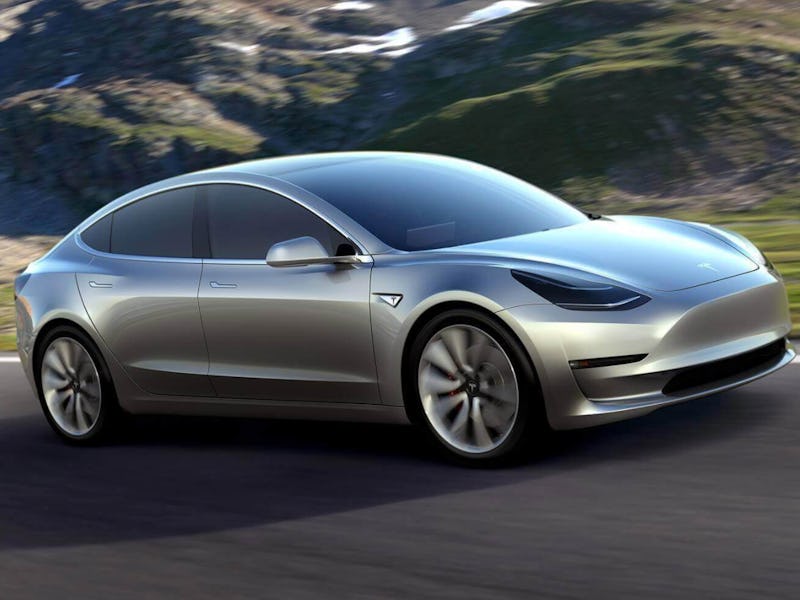In many states, new owners of electric vehicles get a sick tax break from the federal government as a reward for helping save the environment, something that could be a major selling point for the Tesla Model 3 — at least until the benefit goes away. A new report released Friday shows that sales of Elon Musk’s affordable, mass-produced electric vehicle could slump when federal tax credits disappear. Current electric buyers can receive up to $7,500 in federal credit under existing rules, but these credits will be phased out once an automaker sells 200,000 registered plug-in vehicles. And Tesla has bold ambitions to sell far more than that.
A report from Edmunds shows that electric vehicle sales in the state of Georgia slumped when lawmakers removed state-level incentives, particularly at the lower end of the market. This pattern could repeat itself nationwide.
“The majority of consumers are still looking for the best price on a vehicle that meets their needs, and until EVs can be used as seamlessly as their traditional engine counterparts, mass adoption will continue to be a challenge without some kind of financial incentive,” said Jessica Caldwell, executive director of industry analysis for Edmunds.
To find out what may happen when federal credits expire, the team looked at Georgia, which used to have the second highest electric vehicle sales rate in the country behind California. In 2015, lawmakers ended a $5,000 state tax credit scheme, and sales dropped like a stone.
The sales drop in Georgia.
Before the cut, Georgia accounted for 17 percent of electric vehicle sales in the United States. After, the state accounted for just two percent.
The biggest casualty was the Nissan Leaf, which has a list price starting at $30,680 and never saw anywhere near the same sales figures after the cut. The $68,000 Tesla Model S recovered after a few months, and now the luxury electric vehicle has the same sales figures as the entry-level Leaf. Buyers with large amounts of money were seemingly less concerned about the credit cut — but those aren’t the people Musk wants to market the Model 3 to.
Tesla is currently gearing up to launch the Model 3 entry-level vehicle at $35,000 before incentives, targeting a similar market to the Leaf. The manufacturer is aiming, however, to produce 500,000 cars per year by the end of 2018, which would trigger the gradual revocation of the federal incentives if all of those cars are sold.
When a manufacturer reaches the federal threshold, the phase out begins at the end of the quarter after the limit was reached. At that point federal credits drop to $3,750 for six months, then $1,875 for a further six months, and then they are removed completely.
Tesla may have found itself immune to Georgia’s tax credit cut, but if the Leaf is anything to go by, the Model 3 will be working with an audience far more sensitive to price changes. The wider industry may find itself running into the same issues.
“It will take a significant rise in gas prices or stricter government mandates to drive sales of EVs at high volume,” Caldwell said.
